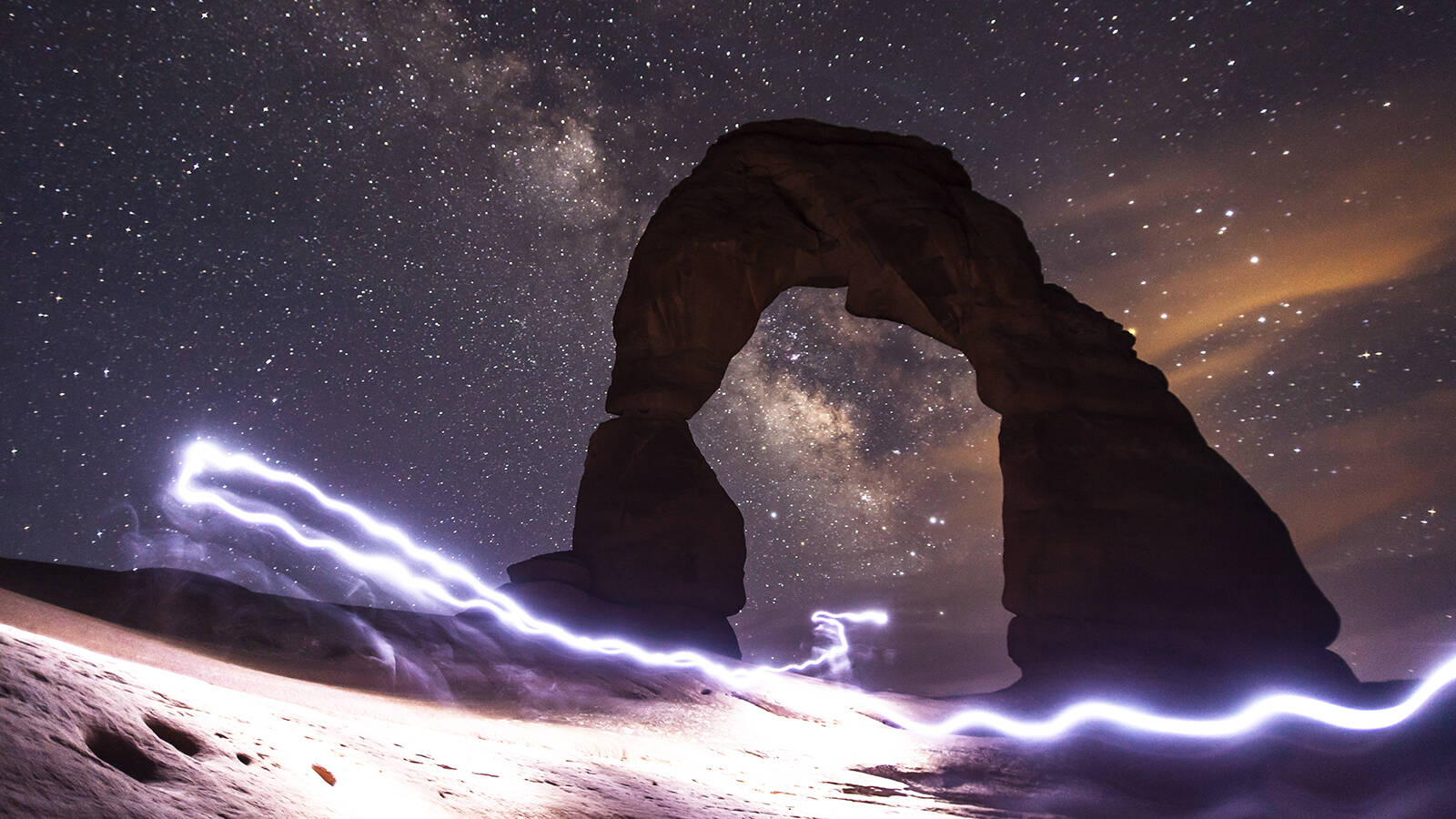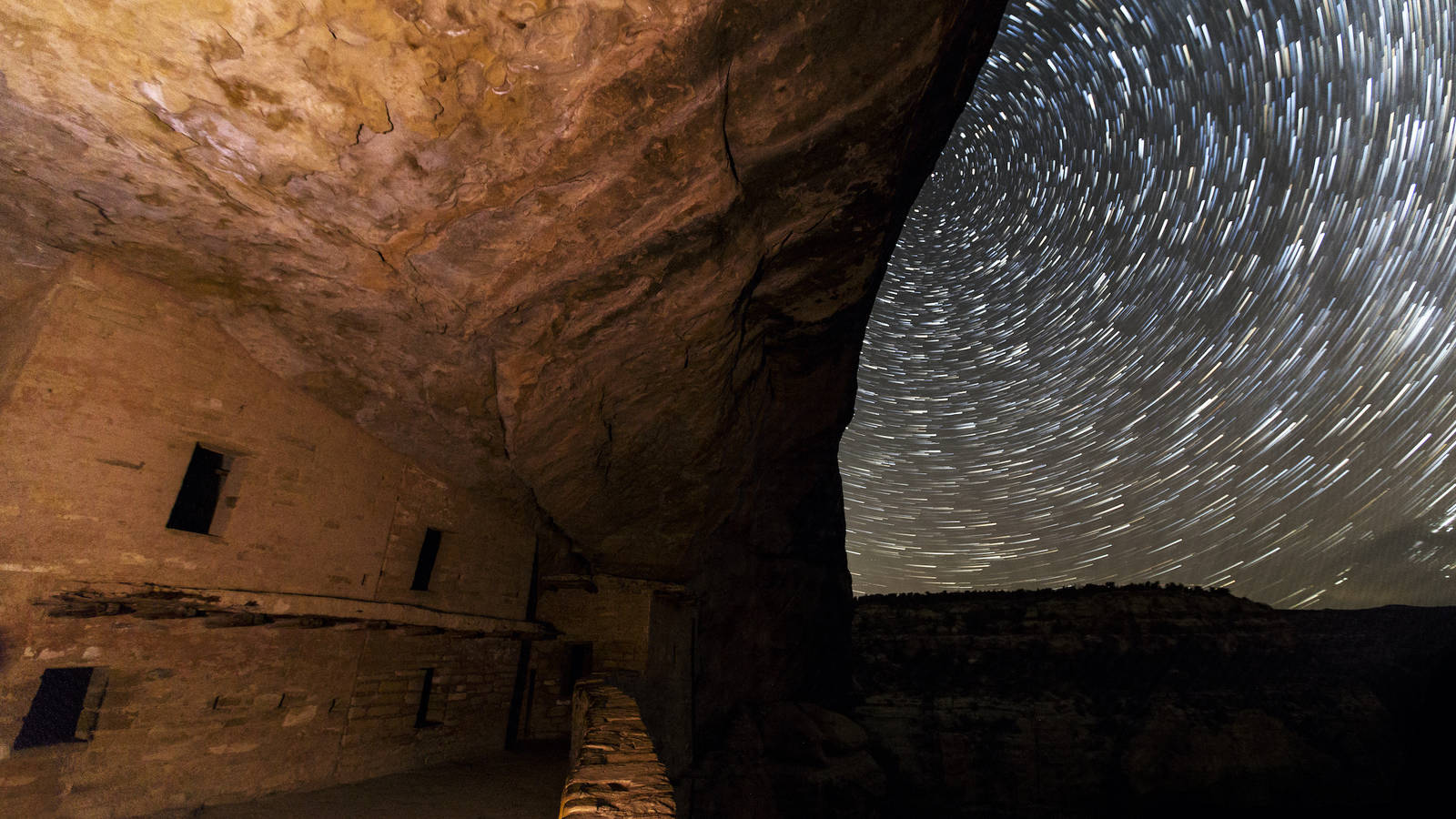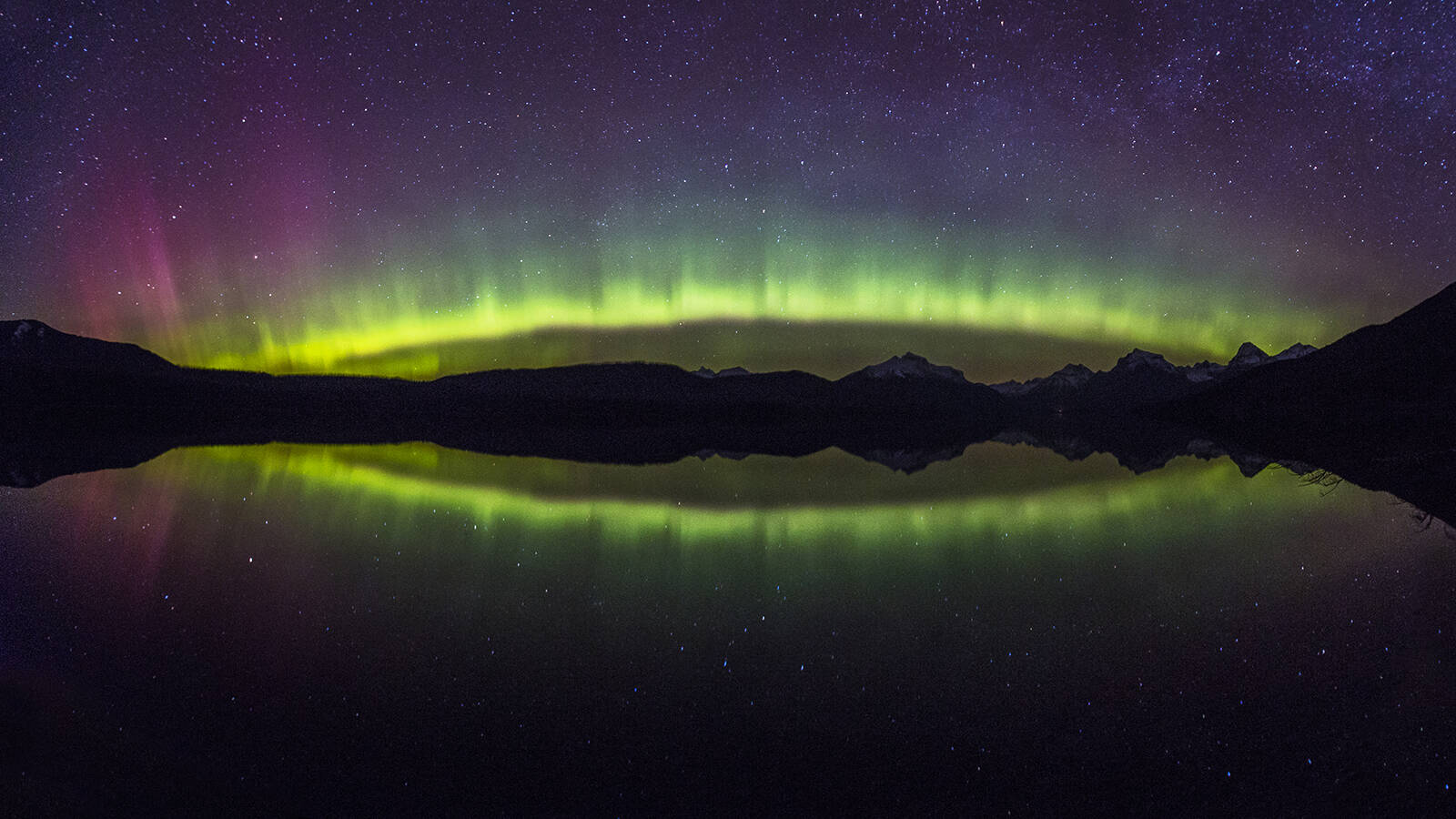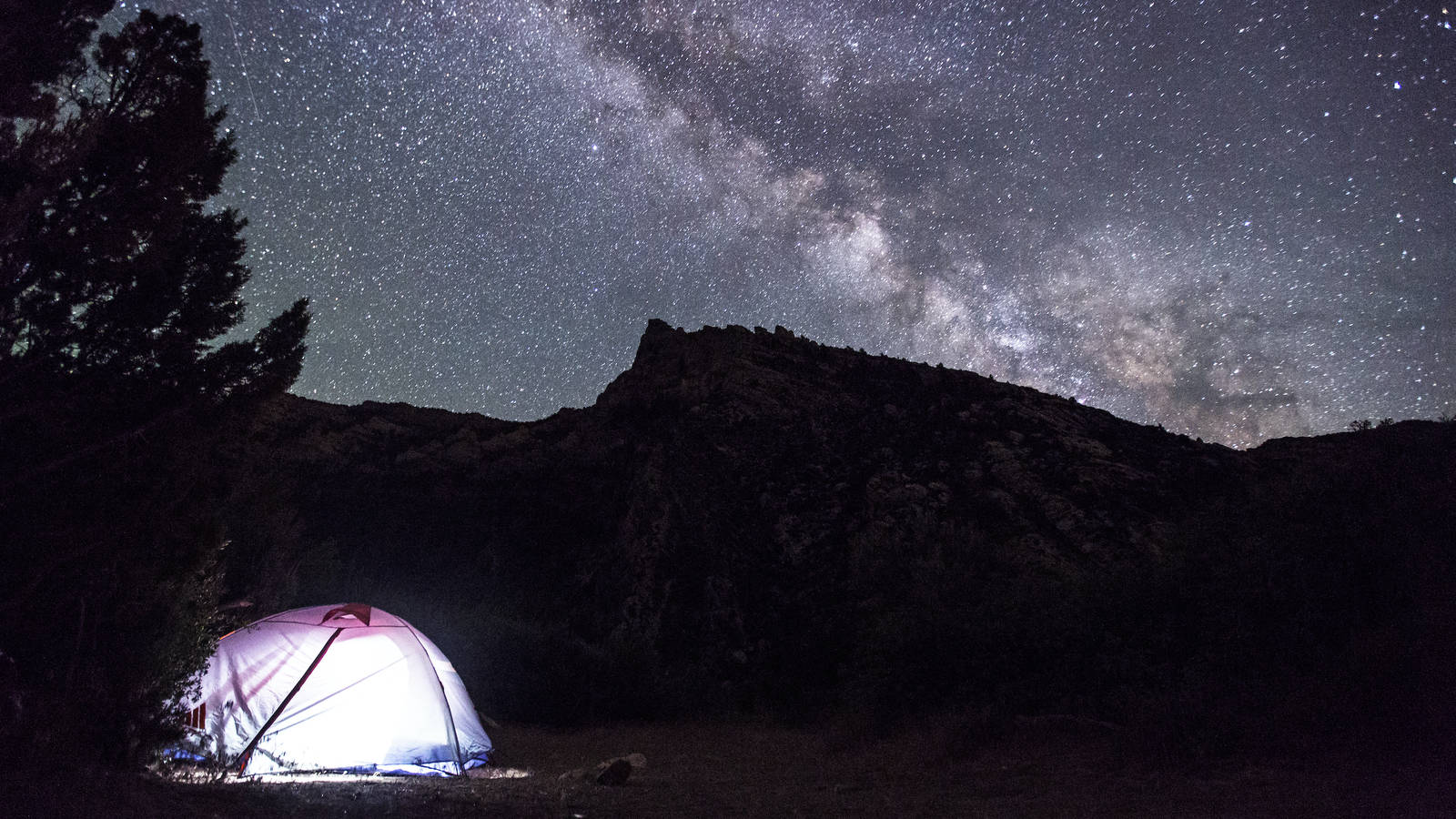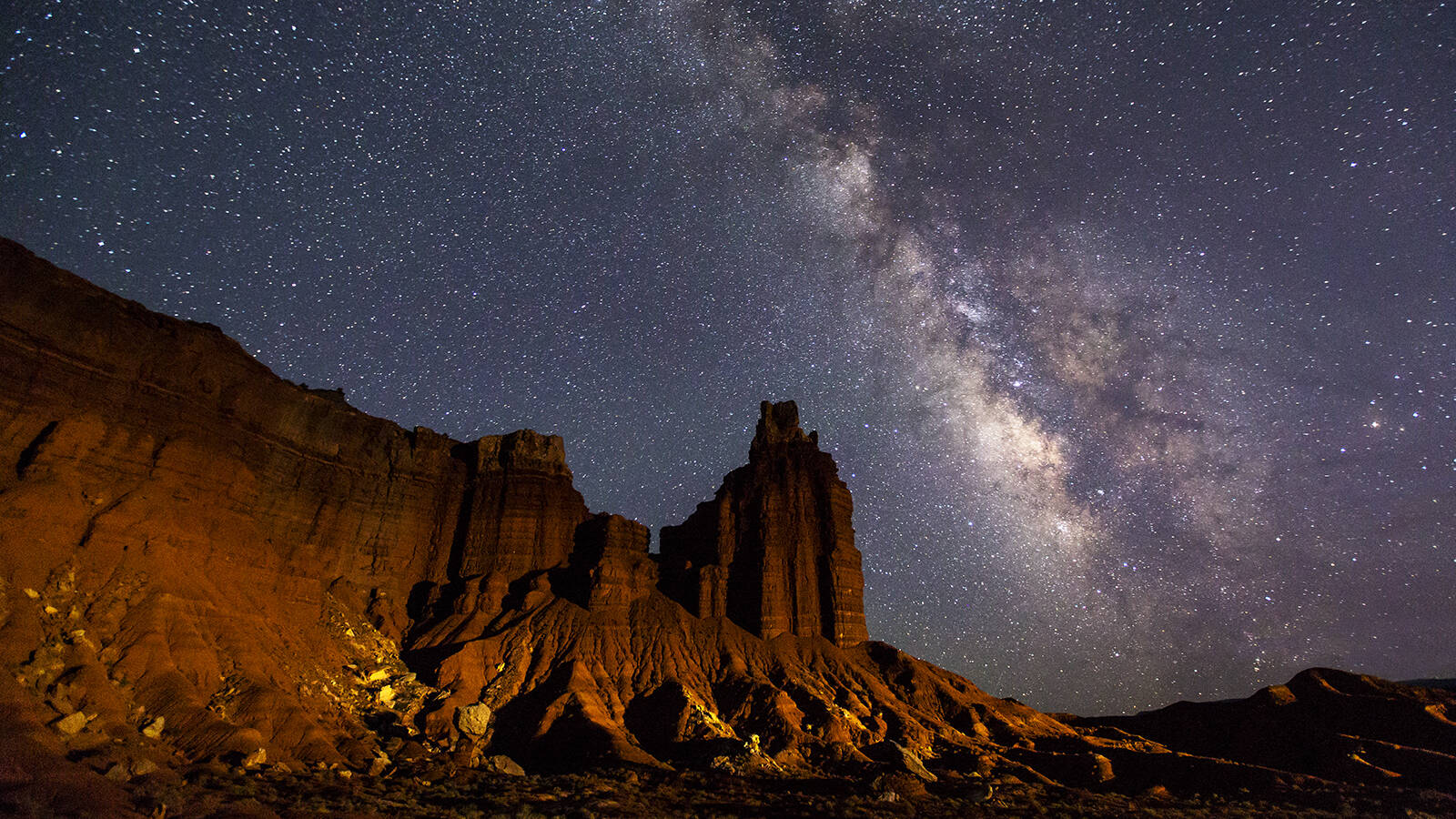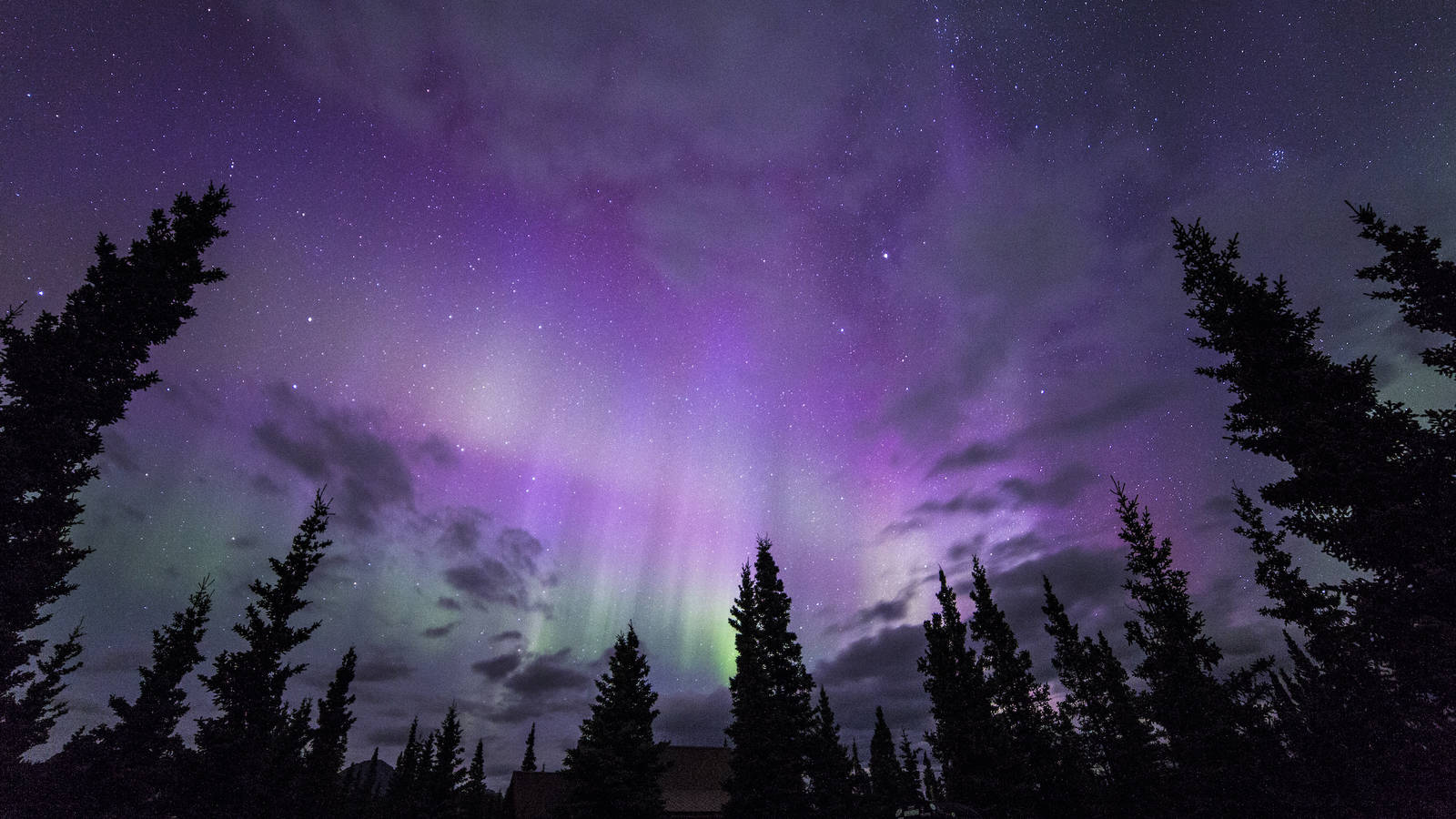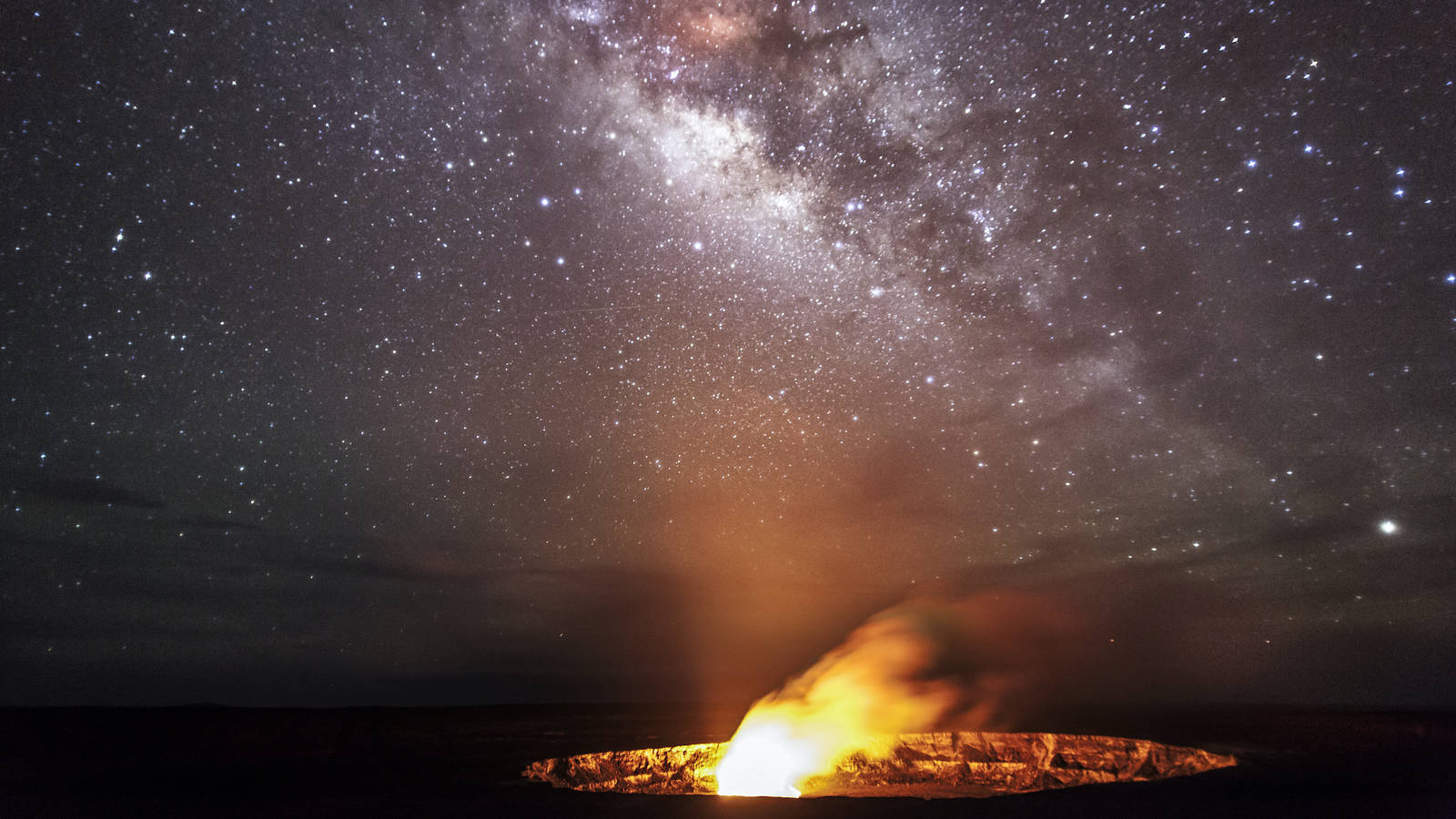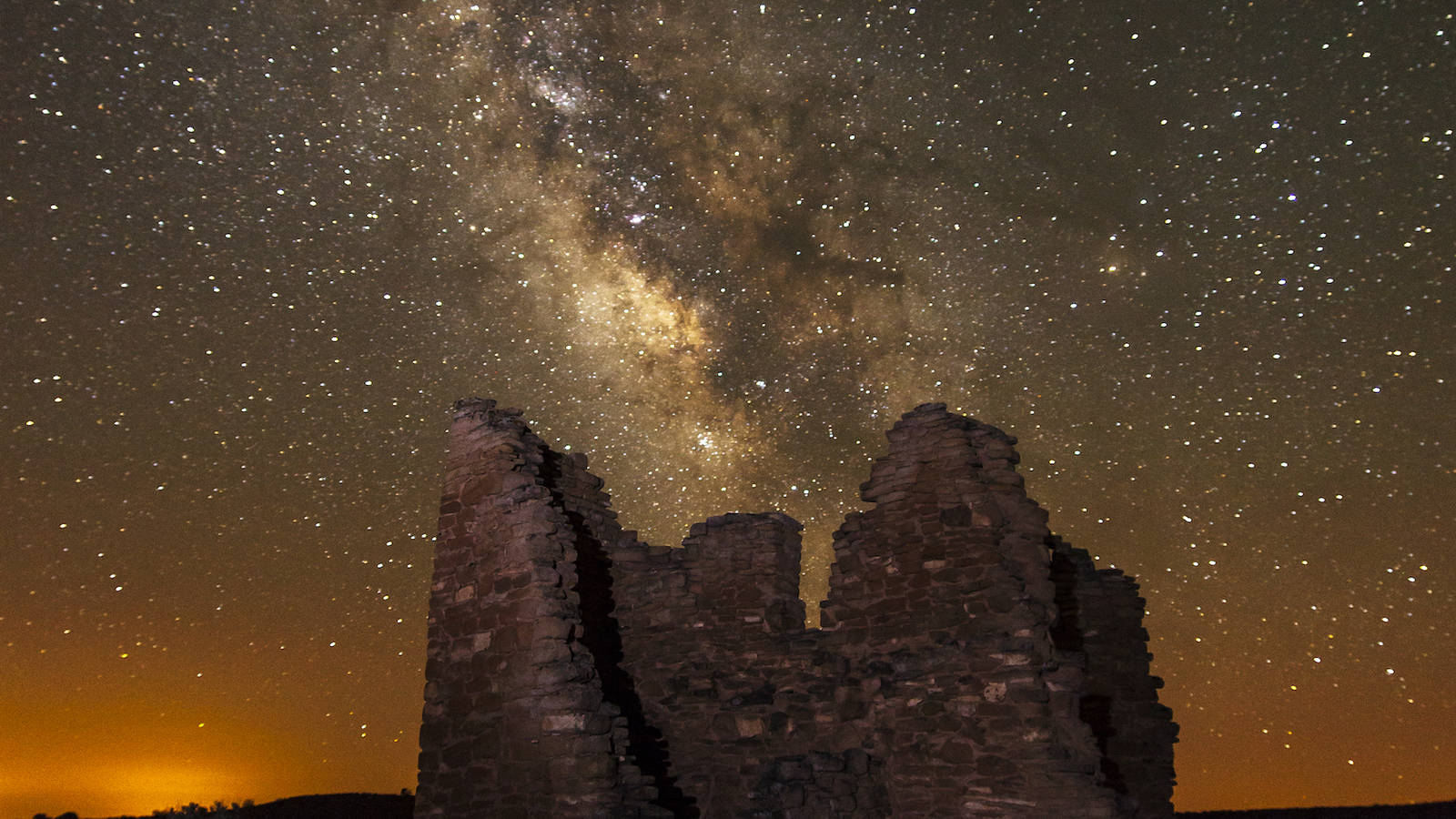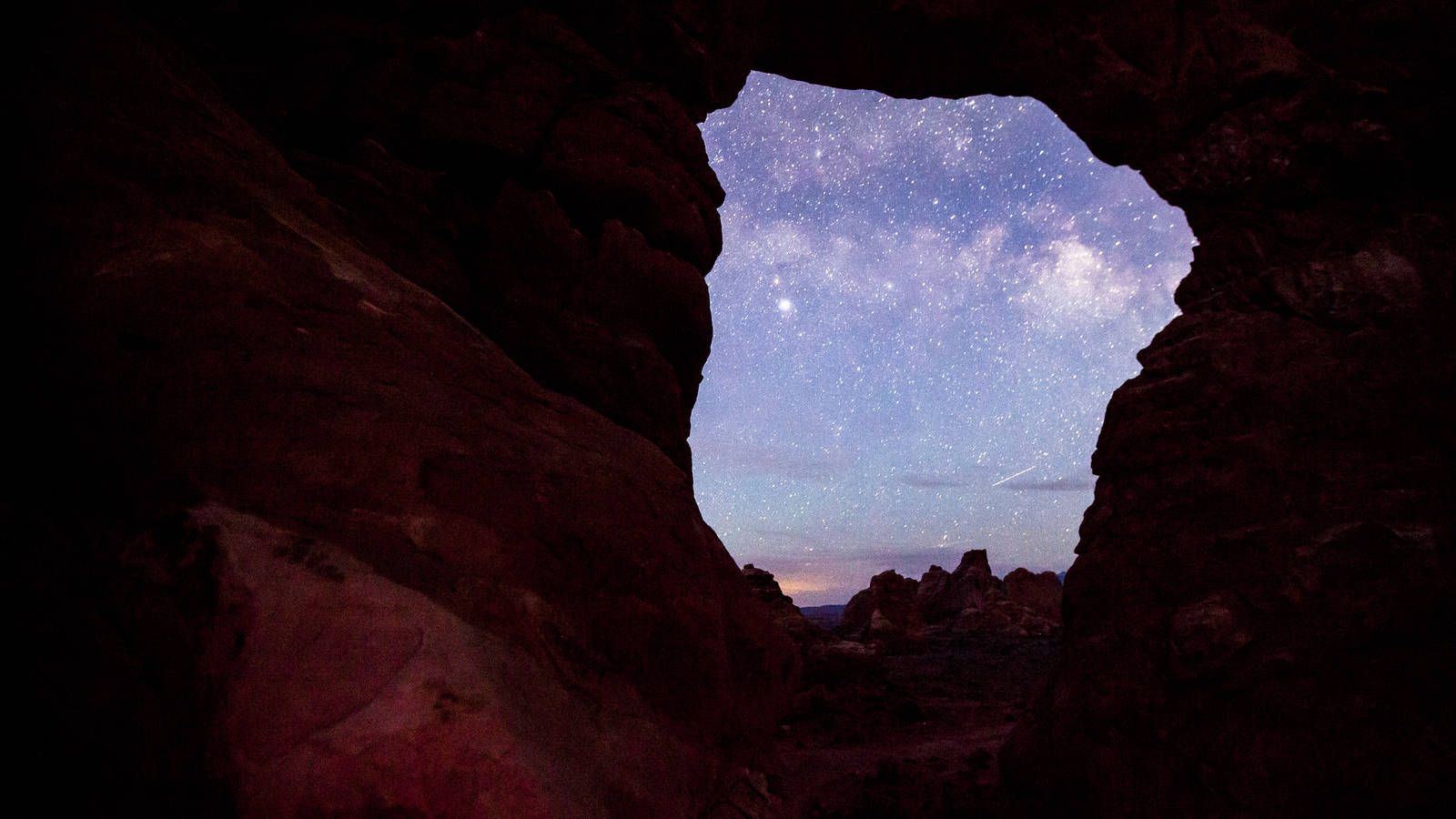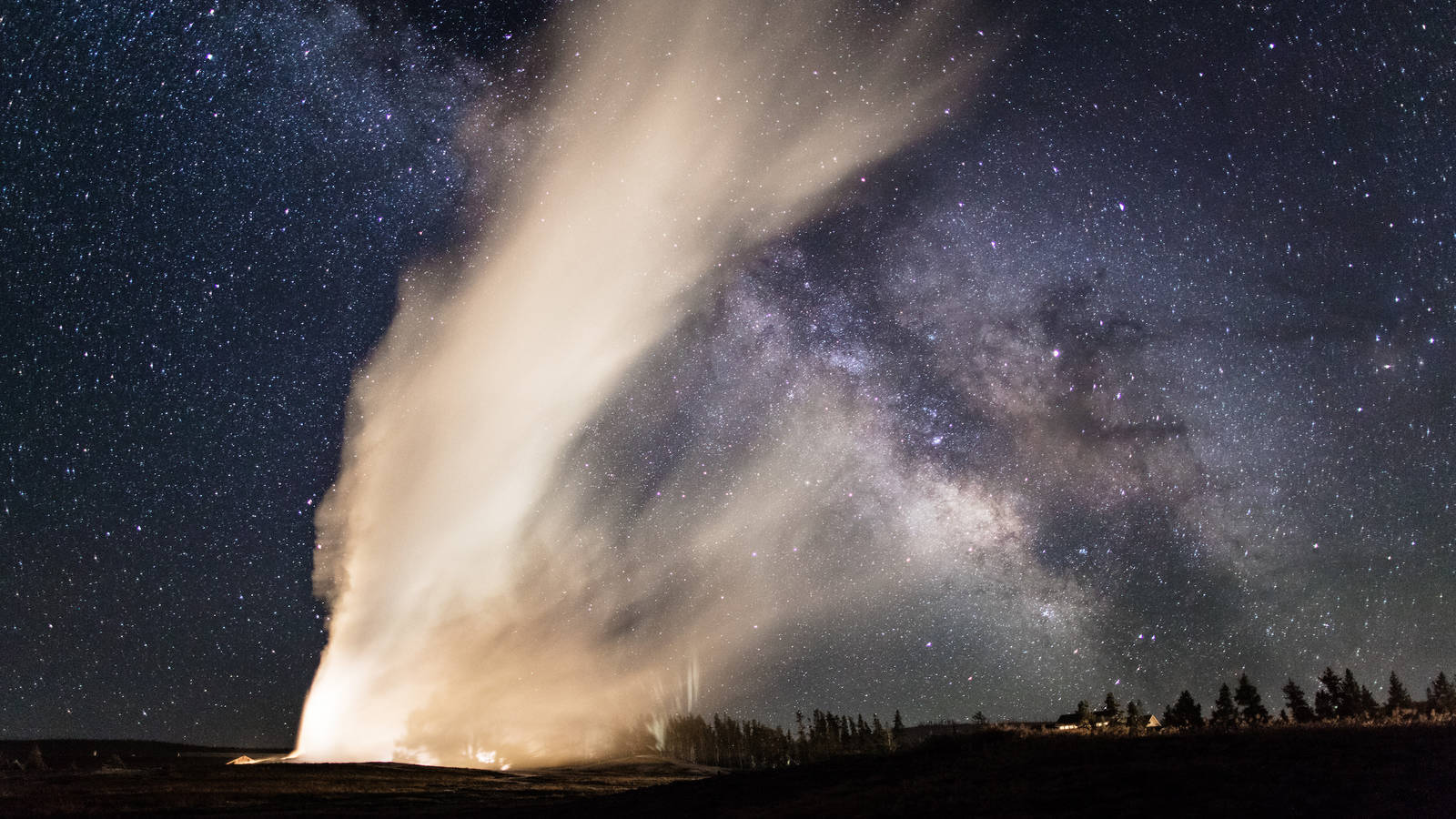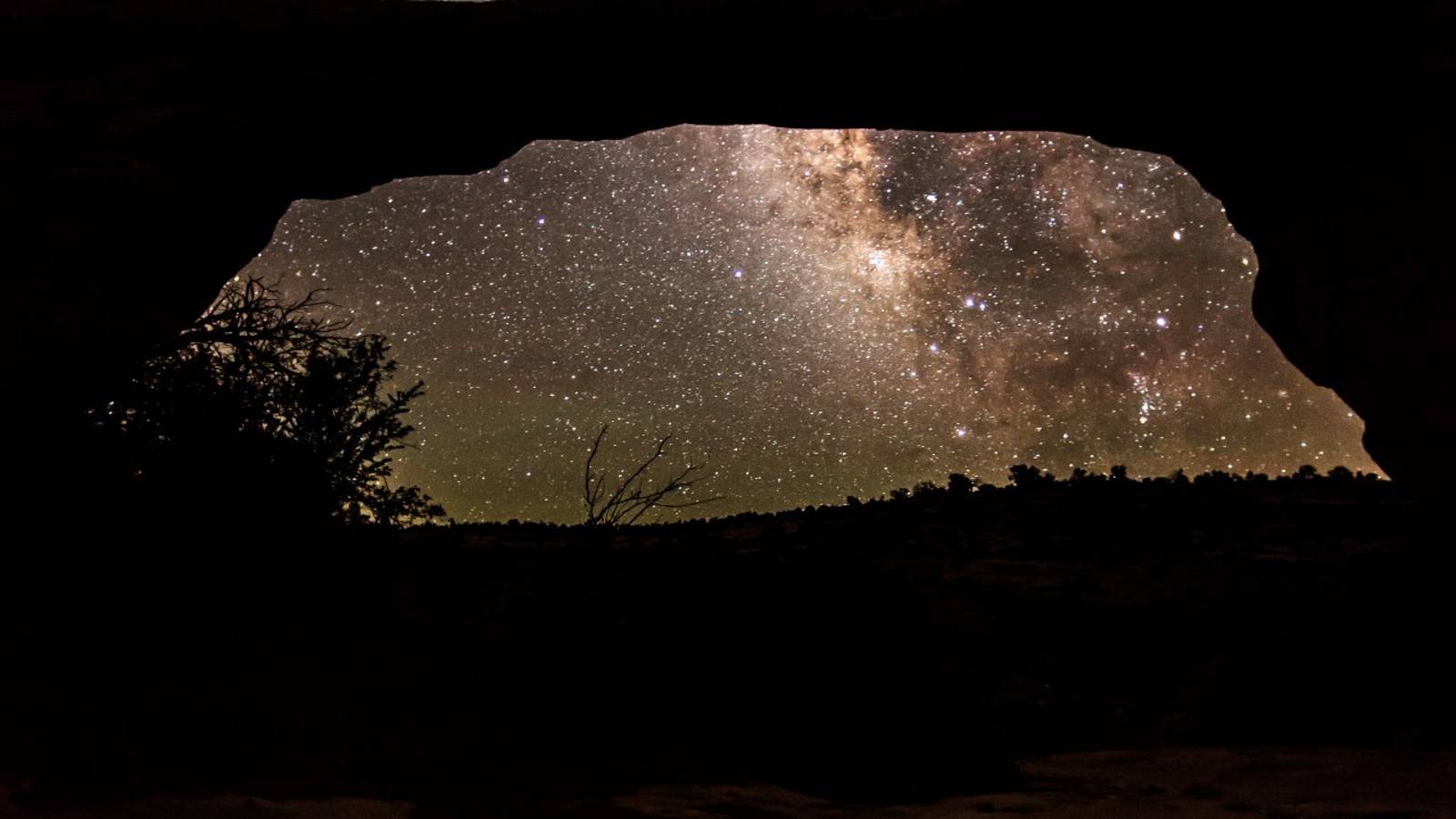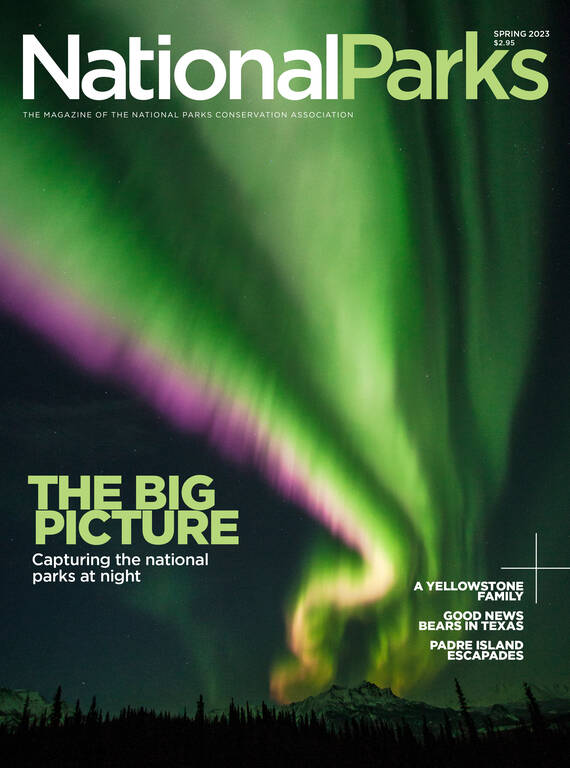Spring 2023
Reaching For The Sky
A photographer and Yellowstone staffer on the art of taking nighttime pictures
In the winter of 2008, as Jacob W. Frank was getting ready to move from Florida to Wyoming for an internship at Grand Teton National Park, his mother handed him her old camera. “You’re going to be living in a park,” she said. “Just take pictures.”
Frank, who was 23 at the time, sagely followed her advice. And then some.
As expected, Frank was awed by the Tetons, but at first, he wasn’t trying to capture what he described as the “in your face” mountain majesty on film. Instead, he was mostly using his camera in a utilitarian way. While staffing the information desk and leading snowshoe walks, he frequently fielded queries he couldn’t answer right away. He would take a photo of the bird or critter or landscape feature in question, research the topic, then email the long-gone visitors a response — and the picture. “It was just a tool I used to understand things in the natural world I didn’t know about,” he said.
But before long, he found himself itching to expand his repertoire. He started taking more photos, longing for fancier equipment, and pouring himself into trying to get a better sunrise or snowy landscape image. “I had caught the bug,” he said.
Frank went on to earn a master’s degree in recreation, parks and tourism from the University of Florida, and fresh out of graduate school, he scored a seasonal job at Glacier. One temporary national park gig led to another, and he ended up working at Rocky Mountain, Carlsbad Caverns and Denali, where he met his wife.
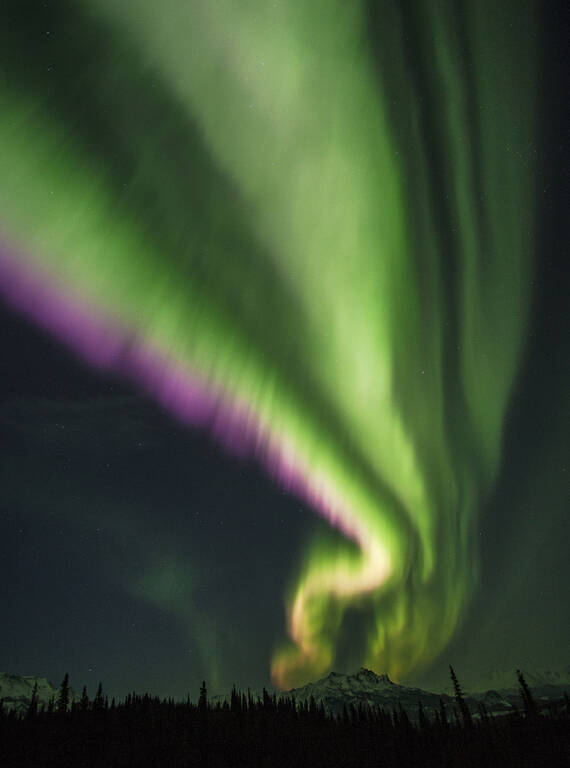
The Northern Lights in Denali National Park and Preserve.
©JACOB W. FRANKHis camera was with him through it all: As he hiked, guided and led ranger talks, he was simultaneously testing out new photo gear, refining his skills and shooting thousands of pictures. Eventually, he landed permanent positions, first at Glacier and then at Yellowstone National Park, where he is currently a digital communications specialist. His photo portfolio is heavy on images of those two behemoths, but over the years, he’s frequently traveled to other parks on his own time and dime. In addition, his bosses often loan him out to other park sites in need of a temporary photographer, and he’s taken official photos at places from Dinosaur National Monument to Padre Island National Seashore to Isle Royale National Park.
It was at Denali in 2011 that Frank got his initial glimpse of the northern lights, the shimmering natural phenomena also known as aurora borealis, and was inspired to tip his camera toward the skies. During his first winter working in the park, he learned through trial and error, shivering outside in the dark and cold. When it got too frigid, he’d set up his camera on a tripod, something he’s usually reluctant to do, and let it shoot at regular intervals all night. In the morning, he’d pop out the memory card and sort through his cache. This method, while unreliable, occasionally worked well: That’s how he got the cover photo, on a night when it was somewhere around negative 40 degrees.
Frank invested in some lenses designed specifically for nighttime shooting and tested them in his backyard. After he saw that the new equipment worked, he hiked up to Delicate Arch in Arches National Park and captured this image of the Milky Way. His headlamp is responsible for the otherworldly streak.
©JACOB W. FRANKStar trails at Balcony House, Mesa Verde National Park, Colorado.
©JACOB W. FRANKFrank had never been to Glacier before he got a seasonal job there. “When I showed up, I was like, ‘Oh my God, this place is awesome,’” he said. Getting a shot like this of the northern lights isn’t easy, though. “You just have to cross your fingers,” Frank said. “It’s not guaranteed.”
©JACOB W. FRANKDinosaur National Monument, Colorado and Utah.
©JACOB W. FRANKWhen Frank finally managed to snap this photo at Capitol Reef National Park in Utah after an hour of trying, he and his wife, who was with him, had to laugh at the lucky break he got as he was about to give up: An approaching car’s headlights had illuminated the rock wall at just the right moment. “She was like, ‘Well, you couldn’t have planned that any better,’” he said.
©JACOB W. FRANKDenali National Park and Preserve, Alaska.
©JACOB W. FRANKHawai'i Volcanoes National Park.
©JACOB W. FRANKHovenweep Castle, Hovenweep National Monument, Utah.
©JACOB W. FRANKView of the Milky Way through Turret Arch, Arches National Park, Utah.
©JACOB W. FRANKOld Faithful, Yellowstone National Park, Wyoming.
©JACOB W. FRANKOwachomo Bridge at Natural Bridges National Monument, Utah.
©JACOB W. FRANKBack in the lower 48, Frank moved on to the Milky Way. In recent years, the technology has evolved dramatically, allowing cameras to do a lot of the work for amateurs, but when Frank was first venturing into those inky nights, he had to crunch the numbers to figure out the right exposure length and teach himself elementary astronomy to predict the movement of the stars.
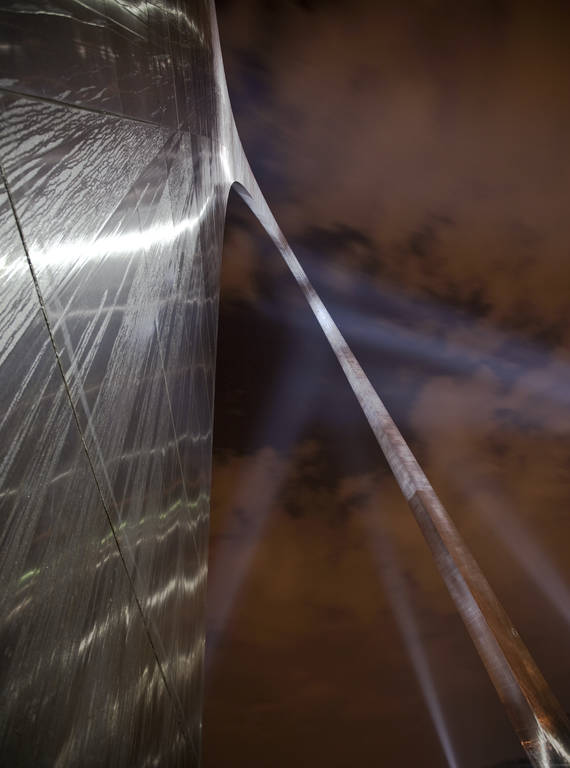
Gateway Arch National Park, Missouri.
©JACOB W. FRANKOver years of documenting the heavens, Frank has found that his most enduring night photos have come together through some magical combination of hard work, patience, planning and good luck. At Chimney Rock in Capitol Reef National Park, he managed to nail the shot when a car crested a hill at just the right moment, and the headlights perfectly lit up the massive rock face. In Yellowstone, he snapped the Old Faithful photo he was aiming for when a serendipitous blast of wind sent a blaze of steam across the sky. In his earliest attempts to capture the Milky Way, he produced an indelible image of Delicate Arch in Arches National Park when the headlamp he was wearing as he sauntered back to his camera showed up as a mesmerizing blue-white swirl. And last summer in Yellowstone, when the fire season and clouds — along with the summer’s destructive flood — conspired to interfere with Frank’s plans to capture the illuminated teepees that had been installed for the park’s 150th anniversary celebration, he jumped into action to capitalize on his one night of clear skies. He strategized to get across the park despite closed roads, slept for a few hours at a friend’s house and spent most of the night shooting. In the end, he got his photo — the Milky Way stretching in a silken arc behind the teepees.

See a Sky Full of Stars at These Certified Dark-Sky Parks
Lay out a blanket after the sun goes down and see a clearer view of the galaxy at these designated dark-sky parks.
See more ›“It’s all kind of a crapshoot,” he said. “You can plan a bunch, and it’s good to plan and rewarding when you see a photo before you get it. … Then there are times when you see it, and it’s not exactly what you thought, but sometimes it turns out even better than what you imagined.”
For Frank, the chase, the technical challenge and the social media likes are well and good, but his passion for the celestial sphere comes from a deeper place. He traces his fascination back to an experience he had biking in the Florida Keys one moonless night when he was little. The stars were so bright that when he turned off his headlamp and let his eyes adjust, he could see clearly. “All of us stopped and got off our bikes and looked up at the sky,” he said. “I’d never seen anything like it before.”
In time, he said, he came to appreciate that night skies are “not just cool to look at.” Nocturnal birds navigate using the stars. Migrating animals use the stars. In fact, nearly half of the world’s animal species are nocturnal, and many use patterns of light and dark to nest, mate, hunt or hide from predators, all of which fuels the Park Service’s desire to preserve night skies. Plus, the urge to turn skyward is a shared human legacy that ties us to ancestors and stories of the past. “People have been gazing out into the stars forever,” he said.
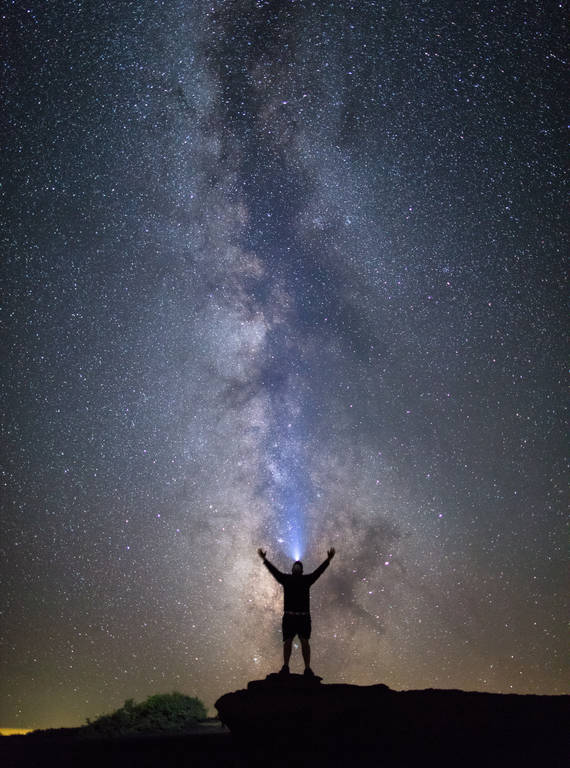
Inferno Cone, Craters of the Moon National Monument and Preserve, Idaho.
©JACOB W. FRANKBut also: Night skies are extremely cool to gape at and contemplate. When Frank saw the northern lights in all their glory for the first time, he was stunned. “I mean, I was laughing out loud. I could not believe it,” he said. “It was sunset bright … And they were moving so fast, and they were different colors, and they were pulsing down at you. It was a moment I’ll never, never, ever forget.”
He puts a nighttime visit to Hawai‘i Volcanoes National Park in the same category of showstoppers. He was there for a cousin’s wedding and convinced his family to visit the Kīlauea volcano after midnight. “That’s when you want to go,” he told them. “Trust me.” He snapped a memorable photo of the Milky Way over the glowing lava pool on that trip, but that was the least of it.
“I remember just standing there in awe,” he said. “There are a handful of things I’ve seen in national parks that have changed me … and the night sky is two or three of the top five.”
Learn more about Jacob W. Frank and see more of his work here.
About the author
-
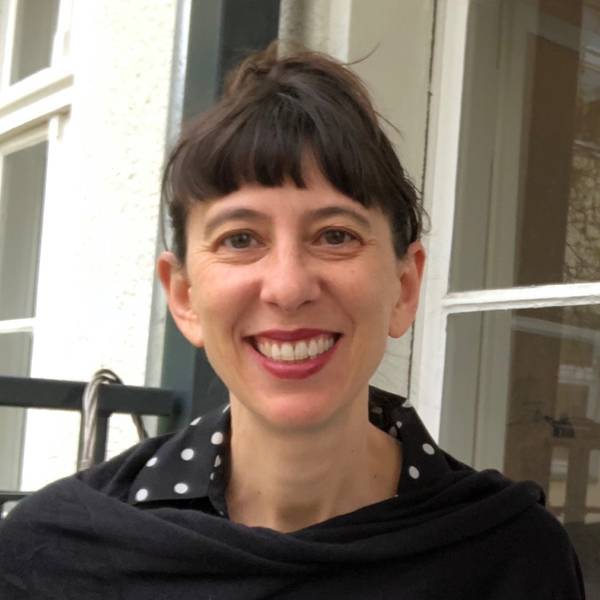 Rona Marech Editor-in-Chief
Rona Marech Editor-in-ChiefRona Marech is the editor-in-chief of National Parks, NPCA’s award-winning magazine. Formerly a staff writer at the Baltimore Sun and the San Francisco Chronicle, Rona joined NPCA in 2013.
